
Master 3D modeling for film and video games in under 2 years with CG Spectrum. Get personalized career training online from leading 3D artists from major studios, plus career support and access to a vibrant community. Learn more.
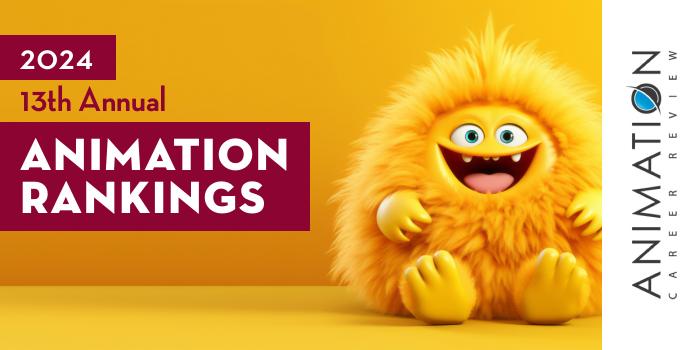
| Ranking | School | City |
|---|---|---|
| 1 | School of Visual Arts | New York |
| 2 | Pratt Institute | Brooklyn |
| 3 | New York University | New York |
| 4 | Rochester Institute of Technology | Rochester |
| 5 | The New School's Parsons School of Design | New York |
| 6 | Syracuse University | Syracuse |
| 7 | Rensselaer Polytechnic Institute | Troy |
| 8 | New York Institute of Technology | New York |
| 9 | Queens College | Queens |
| 10 | Alfred State College | Alfred |
Our 2024 ranking -our thirteenth annual- of the top animation school programs in New York. For an explanation of the ranking criteria, click here.
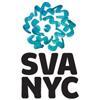
The Animation Department at School of Visual Arts (SVA) has three undergraduate pathways for students who would like to train for a career in animation. Options include Animation, Computer Art, and Computer Animation and Visual Effects. Leading to a BFA, all programs emphasize hands-on experience; working relationships with independent animators across New York and alumni-owned Augenblick Studios, Plymptoons, and Titmouse; and mentors who are accomplished special effects artists, directors, and character designers.
Students in all BFA programs train on the latest industry software including Toon Boom Harmony, Adobe Animate, Storyboard Pro, Maya, and After Effects. SVA Animation students also participate in the School of Visual Arts Thesis Celebration, where they have the opportunity to present their best work to industry professionals and other celebrated figures in the world of art.
Graduates of the Animation, Computer Art, and Computer Animation and Visual Effects BFA programs at SVA have gone on to win awards presented by the Association of International Film Animators (ASIFA), the Academy of Motion Pictures, and The International Animation Festival. Graduates have also won awards for their short and feature films at numerous festivals around the world.
SVA Animation alumni can be found at independent animation studios worldwide and at major studios such as DreamWorks, Nickelodeon, Sony Pictures Animation, Lucasfilm Animation, Disney Animation Studios, and Warner Bros. Animation.
For animation students seeking an advanced degree, School of Visual Arts has an interdisciplinary Computer Arts MFA program with several in-demand concentration areas. The Computer Arts Department at SVA was established in 1986 as the first MFA program in the nation to focus in computer arts. With a network of more than 1,200 alumni, the MFA program features workshops; visiting artists; guest lectures in all areas of animation, experimental art, and motion graphics; and internship opportunities.
Concentration areas for this 60 credit hour program include 2D Animation, 3D Animation & VFX, and Experimental Art. Across options, students will take courses such as Animation Culture; Character Animation; Advanced Modeling and Rigging Concepts; Digital 2D Animation: Tight Tie Downs; Motion Graphics I-II; Emerging Practices: Nonlinear Storytelling; Virtual Reality Storytelling; and Creative Programming for Artists I-II.
During their studies, MFA Computer Art students have been nominated for 13 Student Academy Awards and won nine. They have also won awards at international competitions such as ISEA; Prix Ars Electronica; the Leonardo Awards for Excellence; SIGGRAPH; Electronic Theater and Art Show; Adobe Design Achievement Awards; and the YouTube Awards. Student works have also appeared at New York Film Festival and international film festivals such as Cannes, Tribeca, Sundance, Annecy, and Ottawa.
The Computer Art MFA program at SVA culminates with the Thesis, which students will complete across four courses. These include Thesis Research and Writing I & II; and Thesis I & II.
Graduates of the Computer Arts MFA program at School of Visual Arts have won several Academy, Emmy, and Grammy Awards. Program alumni have also been hired at major studios such as Industrial Light & Magic (ILM), MTV, Pixar, Google, Adobe, Sony Pictures Imageworks, Electronic Arts (EA), Disney, and DreamWorks. Some alumni have gone on to launch their own studios and freelance businesses.
School of Visual Arts opened in 1947 as the Cartoonists and Illustrators school. Classes began with just three teachers and 35 students. Today, SVA serves approximately 3,440 students enrolled in dozens of BFA, MA, MFA, and MPS programs. School of Visual Arts is accredited by the Middle States Commission on Higher Education (MSCHE), with individual program accreditation by the National Association of Schools of Art and Design (NASAD) and the Council for Interior Design Accreditation (CIDA).

Pratt Institute (Pratt) is home to the School of Art, which houses eight departments and more than 30 degree programs. The Department of Digital Arts here houses several animation programs. The BFA and MFA options provide the opportunity to concentrate in 3D Animation and Motion Arts. The BFA program also has a 2D Animation concentration.
Across programs, features include small class sizes with courses taught by industry professionals; a collaborative environment; access to state-of-the art studios and facilities; and the opportunity to create a final professional portfolio or reel.
Pratt BFA students will take courses such as Time and Movement; History of Animation; 3D Animation Studio; Compositing and Special Effects; Audio for Digital Media; Animation Narrative; Video Editing; 2D Animation Studio; Screenwriting; and Professional Practices. BFA students will complete a 2D or 3D Animation Senior Project across several classes. This culminating experience results polished portfolio quality piece.
In the Digital Arts MFA program at Pratt Institute, students will create narrative films, installations, and non-narrative films using 2D and 3D digital animation techniques, motion graphics, and live action. This one-year, 60 credit hour program consists of courses such as 3D Animation: Expressive Motion; 3D Character Modeling and Rigging; 3D Lighting and Rendering; Graduate Animation Seminar I-II; and 3D Animation Studio: Performance & Acting.
The MFA program culminates with the Thesis (time-based project), completed across three courses: Thesis I, Post Production, and Thesis II. Students will use a mix of animation, video audio, rendering and compositing tools to complete their final projects.
Graduates of the Digital Arts programs at Pratt Institute are prepared to pursue positions across a variety of creative industries. MFA alumni have been hired at places such as Sony Pictures Imageworks, Walt Disney Animation Studios, NBCUniversal, Inc., Industrial Light and Magic (ILM), Augenblick, Cartoon Network, Gameloft, DreamWorks, Curious Pictures, Framestore, Digital Domain, Buzzfeed, Titmouse, and Thrillist.
MFA alumni have also gone on to establish academic careers at institutions such as University of Florida (UF), Digital Worlds Institute, New York University (NYU), Rochester Institute of Technology (RIT), New York Institute of Technology (NYIT), Howard University, and National Taiwan Normal University (NTNU).
Founded in 1887, Pratt Institute was one of the nation’s first colleges to welcome students without regard to color, gender, or class. The school serves approximately 5,050 students across campuses in Brooklyn, Manhattan, and Utica, New York. More than 70 degree programs are offered across six schools and The Center for Interdisciplinary Studies. Pratt Institute is accredited by the Middle States Commission on Higher Education (MSCHE).
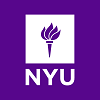
New York University (NYU) is home to Tisch School of the Arts (Tisch). Founded in 1965, Tisch serves more than 4,000 students from 46 states and 58 countries. Programs at Tisch are provided at all degree levels through the Maurice Kanbar Institute of Film & Television; the Institute of Emerging Media; and the Institute of Performing Arts.
Producing more than 5,000 films per year, Kanbar houses the Department of Animation and Digital Arts—home to the Film and Television BFA. Within the BFA program is an Animation Area. Launched in 1980 with just five classes and 80 students, the Animation Area was the first program to bring digital technology to Kanbar. Today, the Animation Area provides nearly twenty different courses to more than 500 students from nearly every state and dozens of countries.
The Animation Area at NYU Tisch provides instruction in 2D, 3D, and Traditional Animation. The program begins with animation fundamentals and progresses to intermediate animation, then advanced. Course examples include Experimental Animation; Drawing and Design for Animation; Stop Motion Animation; Visual Effects for Compositing; Special Topics in 3D Animation; Advanced Animation Production; Action Analysis I-II; Writing for Animation; and Animation: From Pitching to Pipeline to Production.
In addition to providing in-demand courses and access to state-of-the-art facilities and equipment, the Animation Area at NYU Tisch features guest speakers such as Jeffrey Katzenberg, David Polonski, and Chris Butler, along with access to numerous study abroad and internship opportunities.
Graduates of the Animation Area at New York University’s Tisch School of the Arts are prepared to pursue positions at studios across the U.S. and abroad. Some program alumni go on to launch their own studios and freelance businesses. Others have been hired at major studios such as Pixar, DreamWorks, and Walt Disney Animation.
New York University is the largest private university in the U.S. Founded in 1831, the school serves more than 55,000 students across degree-granting campuses in New York, Abu Dhabi, and Shanghai. NYU also operates 12 global academic centers and research programs in more than 25 countries. With more than 19,000 employees, New York University is also one of the largest employers in New York City. These professionals help administer an estimated 400+ programs. NYU is accredited by the Middle States Commission on Higher Education (MSCHE).
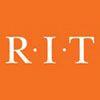
Rochester Institute of Technology (RIT) is home to the College of Art and Design, which houses the School of Film and Animation. A designated Center of Excellence (COE) by Toon Boon Animation, the School provides many opportunities for students to gain hands on experience and network—all before graduation.
For starters, RIT School of Film and Animation students may participate in RIT’s Study Away: LA Program. Students that choose to participate in the program will spend a semester in Los Angeles where they can intern at top studios and entertainment companies, and take two courses to complement the study-away experience.
RIT also houses the fourth-oldest and one of the largest cooperative (co-op) education programs in the world. All RIT programs provide co-op education opportunities as well as internships and other experiential learning experiences. RIT animation students also have access to 52,000 square foot MAGIC Spell Studios, and labs and classrooms outfitted with industry standard technology and software.
At all levels, animation students will participate in the RIT’s Creative Industry Day, where they will have the opportunity to mingle with representatives of studios, design firms, and other creative companies.
The School of Film and Animation at RIT also houses the Animation Program. Several degree options are available. At the undergraduate level, the school has a stand-alone Film and Animation BFA that focuses on production, screenwriting, 2D and 3D animation, and stop motion animation; a BFA in Film and Animation with an Animation or Production Option; and a Motion Picture BS that combines engineering and the arts with animation production, feature film, and television.
At the graduate level, RIT’s School of Film and Animation has a Film and Animation MFA with four options including 2D Animation, 3D Animation, Production, and Screenwriting. Students in this program have 24/7 access to a dedicated graduate lab with industry-level software; and opportunities to gain career experience as a faculty research assistant, graduate assistant, or other position.
Across all School of Film and Animation programs students have access to state-of-the-art facilities and equipment such as MAGIC Spell Studios; Stop Motion Studios; Animation 2D and 3D Labs; Soundstages; Animation and Drawing Studios; Virtual Reality Labs; Editing Suites; a Mixdown Room; Post-Production Labs; SOFA Cage; and the Pro Tools Editing Suite.
All programs (graduate and undergraduate) culminate with a finished film completed across several Capstone or Thesis courses. Students will then take part in a public screening of their finished work.
Graduates of Rochester Institute of Technology enjoy an impressive 92% employment rate. School of Film and Animation alumni are prepared to pursue careers across the creative, technical, medical, architecture, and legal industries. Examples of companies and studios that have hired RIT Animation graduates include Industrial Light & Magic (ILM), Disney Animation Studios, Lucasfilm, Electronic Arts (EA), Dolby, DreamWorks, Nickelodeon, and Sony.
Rochester Institute of Technology was founded in 1829 as the Rochester Athenaeum. With global campuses in China, Croatia, Dubai, and Kosovo, this research university serves more than 20,000 students, making it one of the largest private universities in the U.S. RIT provides 200+ academic programs across 10 colleges and institutes, and the School of Individualized Study. Rochester Institute of Technology is accredited by the Middle States Commission on Higher Education (MSCHE).
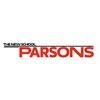
In the 20th century, The New School became famous for housing courses in the creative arts taught by artists such as Frank Lloyd Wright, Martha Graham, W. H. Auden. In 1926, The New School was also the first American university to teach the history of film, and one of the first to offer college-level courses in photography and jazz. Today, The New School is the only university to house a design school, liberal arts college, performing arts college, and graduate programs and colleges under one roof.
Serving 5,755 students, design is the largest college at The New School. Known as Parsons School of Design, the school also houses a Design and Technology program that has both BFA and MFA pathways.
The STEM-designated BFA program focuses on interaction, storytelling, and emerging art and design practices. Specializations include Creative Technology and Game Design. Course examples for this the 120 credit hour program include Drawing/Imaging; Space/Materiality; Integrative Studio; Time’ Design Studies; Core Studio Environments; Objects as History; and Integrative Studio.
All New School undergraduates must also complete the first-year experience. Consisting of 30 credits, the experience includes seminars and studios; liberal arts studies; and the exploration of 2D and 3D processes, drawing, digital design, and more. The Design and Technology BFA culminates with a thesis project, completed across two courses worth a total of 12 credits.
The Design and Technology MFA at Parsons School of Design is a STEM-designated, studio-based degree that requires on-campus study. Consisting of 60 credit hours, the MFA features courses and studios such as xFab Lecture and Lab; Major Studio; Creative Practice Seminar; and Collaboration Studio. Other program features include opportunities to work on projects with external partners such as One Plus and The Metropolitan Museum of Art (The Met); and creative collaborations with students in other programs such as Transdisciplinary Design, Data Visualization, and Communication Design.
Both MFA and BFA students also have the opportunity to participate in the Parsons internship program and projects with external partners. Recent partners include Google, MIT, Panasonic, IBM, The New York Times, SXSW, Nokia, Intel, Samsung, and NYC Media Lab.
The Design and Technology MFA program at Parsons School of Design culminates with the Thesis Studio, completed across two courses and 12 credit hours.
The School of Continuing & Professional Education at The New School Parsons has an additional option for animators seeking a shorter program. Leading to a certificate, the Motion Design and Animation program consists of three courses that explore the production process from start to finish. Courses can be completed in one year, and include Storytelling with Motion Graphics and Animation; Motion Design 1 with After Effects; and Moton Design 2 with After Effects.
The Motion Design and Animation certificate is delivered entirely delivered online, and it can be taken alone or in combination with the Design and Technology BFA and MFA programs.
Students in all New School programs have the opportunity to interact with and work on projects with professionals at places such as Apple, Siemens, Nickelodeon, the Metropolitan Museum of Art, gameLab, MTV, Rockwell Interaction Lab, Atari, UNESCO, OnePlus Technology, and Eyebeam Art & Technology Center.
Graduates of the BFA, MFA, and certificate programs at Parsons School of Design are prepared to pursue positions in areas such as animation, 2D and 3D animation, game design, advertising, VR/AR, motion graphics, immersion experience design, digital filmmaking, graphic arts, interaction design, television production, mobile and application design, web design, software design, and media art.
The New School was founded in 1919 as the New School for Social Research. Serving approximately 10,815 students, the school provides more than 120 degree and diploma programs across six colleges and schools, including Parsons Paris. The New School is accredited by the Middle States Commission on Higher Education (MSCHE).
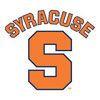
The Department of Film and Media Arts at Syracuse University (SU) is part of the College of Visual & Performing Arts (VPA). Within the Department are several paths to study animation. Options include a Computer Art and Animation BFA, a Computer Art MFA, and an Animation and Visual Effects minor.
The minor allows students to focus in Animation, Visual Effects, or both. Consisting of 21 credit hours, this option includes courses such as Animation Workshop I-II; Previz and Character Development for Animation; Advanced 3D Animation and Visual Effects; Drawing II: Representation to Conceptualization; Visual Effects Workshop I-II; Drawing for Illustration; and Film Scriptwriting.
Upon completion of the SU Animation and Visual Effects minor, students may pursue further study in the College of VPA or other SU colleges. Students are also prepared to pursue entry-level positions in the entertainment industry.
The Computer Art and Animation BFA at Syracuse University provides the opportunity to observe the production processes at studios around the world. Examples include Method Studios (Los Angeles, New York, Atlanta, Vancouver and Montreal, Canada, Melbourne, Australia, and Pune, India); and Filmworks/FX (Brooklyn, New York, Los Angeles, and Woodland Hills, California).
All BFA students also have the opportunity to participate in the VPA LA Semester. This immersive professional development program allows students to work as interns in Los Angeles, while taking courses taught by professionals working in the city’s entertainment industry. Course examples for this 121 credit hour program include History of Animation; Art and Craft of Animation; Intermediate 3D Animation; Visual Effects Workshop I and II; Topics in Computer Gaming; Film and Media Arts Advanced Studio; Previsualization and Character Development for Animation; and Advanced Animation.
The SU Computer Art and Animation program culminates with the Senior Project and Portfolio, completed across two courses.
Graduates of the SU Computer Art and Animation BFA program have been hired at places such as Pixar, Cartoon Network, Sony Pictures Imageworks, Filmworks/FX, and Tippett Studio.
The Computer Art MFA program at Syracuse University was founded in 1980 by Computer Artist Edward Zajec. Consisting of 60 credit hours completed over three years, the program allows students to focus in a specific area through studio electives (12 credits) and free electives (six credits). Areas may include Computer Animation, Visual Effects (VFX), Gaming, Software Art, Sonic Art, Multi-Channel Installation, Physical Computing, and Electronic Objects.
Graduate students in all areas have 24/7 access to computer art facilities; video post-production, audio production, and recording studios; dedicated Apple MacPro workstation; video camcorders and field audio recorders; and a range of physical computing gear.
The Computer Art MFA program at Syracuse University culminates with an oral examination and final project with presentation. Graduates are prepared for careers in all areas of entertainment. Program alumni can be found at major networks and studios such as Industrial Light and Magic (ILM), Pixar, Sony Pictures Imageworks, Cartoon Network, MPC Film, Blizzard Entertainment, Tippett Studio, and Filmworks/FX.
Founded in 1870, Syracuse University is an R1 research university that serves approximately 22,700 students from all 50 states and 120 countries. More than 200 majors, 100 minors, and 200 advanced degree programs are provided across 13 colleges and schools. In addition to campuses in Syracuse, Manhattan, Washington DC, and Los Angeles, Syracuse University operates overseas centers in France, Italy, London, Poland, Chile, and Spain. Syracuse University is accredited by the Middle States Commission on Higher Education (MSCHE).

The School of Humanities, Arts, and Social Sciences (HASS) at Rensselaer Polytechnic Institute (RPI) houses the Department of Art, home to the Electronic Arts (EART) Program. EART students have access several paths to study animation. Options include the EART BS, PhD, and minor.
The EART BS has concentrations in Animation and Algorithmic Art; Sonic Arts; Video, Performance and Social Practice; Integrated Visual Art; and DIY (Do It Yourself). All options explore 3D Animation, Graphic Storytelling, Interactive Arts, and Digital Imaging. Animation and Algorithmic Art students will take courses such as 3D Animation; 2D Experimental Animation; Art and Code and Interactivity; Experimental Game Design; Advanced Digital 3D Projects; Art for Interactive Media; Creative Seminar I and II; 3D Digital Modeling; Life Drawing and Anatomy for Artists; Interactive Arts Programming; 3D Visual Effects; Topics in the Arts; Animation Production; and Digital Filmmaking.
The EART PhD program at Rensselaer Polytechnic Institute is one of the first programs of its kind. Consisting of 48 credit hours beyond the master’s degree, this interdisciplinary program requires successful completion of Electronic Arts Overview; Research Methods; the Arts Graduate Colloquium; and a Dissertation. Study plans allow students to choose the remaining courses from other RPI departments and programs. This includes Animation, Video, Science and Technology Performance, and Computer Music.
The EART PhD Dissertation—the culminating experience for the program—leads to the creation of a practice-based presentation in the form of a gallery show or performance.
The RPI EART minor is an immersive program that requires 16 credit hours of study. Students in this program will take a combination of history/theory and studio courses. Examples of history/theory courses include The Multimedia Century; World Music; and Histories of Western Music. Studio course options include Art for Interactive Media; Digital Filmmaking; Basic Drawing; Music and Sound; and Digital Imaging.
Graduates of the EART programs at Rensselaer Polytechnic Institute are prepared to pursue careers in fields such as animation, television and film, game design and development, advertising, and education. Program alumni have been hired at companies and studios such as DreamWorks Animation, Microsoft, Branch VFX, IBM, Facebook, 1st Playable, AMC Networks, FDM Group, Something Digital, F2 System, and The Creative Advantage.
Established in 1824, Rensselaer Polytechnic Institute is the nation’s first technological research university. Serving approximately 7,065 students, RPI provides more than 50 degree programs across five schools. Rensselaer Polytechnic Institute is accredited by the Middle States Association of Colleges and Schools (MSACS).

New York Institute of Technology (NYIT or New York Tech) was founded in 1955 by Alexander Schure. A PhD, creative, and entrepreneur, Schure went on to launch the schools Computer Graphics Laboratory in 1974. This innovative facility is responsible for producing one of the world’s first computer animated films—Tubby the Tuba (1975). The production was directed by Schure and Pixar co-founders Alvy Ray Smith and Ed Catmull.
Today, NYIT houses six colleges and schools, including the School of Architecture & Design—home to the Department of Digital Art & Design. Within the department are two paths to study animation: the Digital Arts BFA and the Digital Art & Design MFA. The graduate program has a Fine Arts & Technology concentration.
As part of NYIT, all School of Architecture & Design students benefit from dynamic projects; access to internship opportunities at places such as Google, HBO, Live Nation, NBCUniversal, and MTV; and access to a state-of-the-art art media lab equipped with 2D, 3D and graphics software applications, gaming technologies, motion capture, 3D printing and emerging technologies.
Both MFA and BFA students also have opportunities to participate seminars, workshops, and summer abroad experiences. In addition, the Department of Digital Art & Design provides opportunities for students to show their work at the annual New York Institute of Technology Film and Animation Festival.
The NYIT Digital Arts BFA requires 120 credit hours of study and it can be completed at either the New York or Long Island campus. The program explores computer animation, digital arts production, and related areas. Course examples include Communication for Art and Design; Digital Compositing; Computer Graphics I and II; Motion Graphics; Form and Space; Drawing I and II; and Art History.
For elective requirements, students may choose from courses that explore a range of topics. Elective examples include 2D Animation; Illustration; Advanced 3D Modeling and Animation; Motion Capture; Concept and Visual Storytelling; Game Design I and II; Traditional to Digital Media; and Special Topics. Digital Arts BFA students will complete two thesis courses and a portfolio course to graduate.
Graduates of the NYIT Digital Arts BFA are prepared to pursue roles such as Animator, Storyboard Artist, Video Game Designer, Multimedia Producer, Digital Artist, Motion Capture Artist, 3D Modeler, and Motion Graphics Designer.
The 60 credit hour Digital Art & Design MFA at NYIT emphasizes classroom projects using 3D modeling software; motion capture; and experiential art via virtual and augment reality (VR/AR). Course examples for this NYC-based program include History of Art and Technology; Drawing; Aesthetics and Theory; Critical Thinking and Writing About the Arts; and Business of Creative Industries.
Students can develop a focus area through the required 21 credit hours of electives. Elective examples include Visual Effects; Stop-Motion Studio; Experimental Media; UX/UI Design; and Computer Programming.
The Digital Art & Design MFA at New York Institute of Technology culminates with Thesis Production I and II, worth eight credit hours, and the Thesis Paper and Exhibition course, worth two credits.
Graduates are prepared to pursue positions such as Animator, Production Artist, Digital Artist, Multimedia Designer, Motion Capture Artist, and Arts Educator.
New York Institute of Technology serves approximately 8,000 students from 40 states and more than 70 countries. The school provides more than 90 degree programs across campuses in NYC and Long Island; Jonesboro, Arkansas; and Vancouver, Canada. New York Institute of Technology is accredited by the Commission on Higher Education of the Middle States Association of Colleges and Schools.
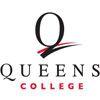
Founded in 2022, the School of Arts (SoA) at Queens College (QC) provides multidisciplinary arts education within the City University of New York (CUNY) system. The school houses more than 50 degree programs, minors, and professional development programs covering art, design, media studies, and more.
Within the SoA is an Art Department that provides one path to study animation—the Design BFA. Students in this program can concentrate in Animation and Illustration; Interaction Design; or Communication Design. Students in any SoA program can add the Animation minor. Consisting of 21 credit hours, the minor allows students to select courses from a list of 25 options. Examples include Animation and 3-D Modeling; Traditional Animation; Storyboarding & Storytelling; Motion Graphics; VT: Pixel-based Imagery; Portfolio in Illustration; VT: Video Graphics and Compositing; and Independent Internship.
The Design BFA requires 63 credits in the major. Concentrations consist of five electives chosen from recommended lists. Examples of required courses in the major include Design 1, 2 and 3; VT: Intro to Digital Animation; Illustration; Web Design; and Basic Software for Design. Examples of concentration and design electives include Traditional Animation; Digital Moviemaking I-II; Game Design; Shoot, Edit, Post; Physical Computing; VT: 3-D Animation; Motion Graphics; VT: Pixel-Based Imagery; Creative Coding; Storyboarding and Storytelling; Digital Imagemaking; and Video Graphics and Compositing.
An internship is also part of the program as well as the opportunity to study abroad for a summer, winter intersession, semester, or even a year.
Upon completion of the Design BFA program at Queens College, students will have a portfolio of their best work. Graduates are prepared to pursue titles such as Animator, Game Artist, Creative Director, Storyboard Artist, Advertising Animator, Multimedia Artist, Forensic Animator, Digital Artist, Art Director, and Medical Animator.
Founded in 1937, Queens College is part of the City University of New York (CUNY) System. QC serves approximately 18,770 students enrolled in 78 majors, over 100 master’s degrees, and more than 40 accelerated master’s. Queens College is accredited by the Middle States Commission on Higher Education (MSCHE).
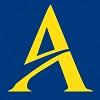
Alfred State College (also Alfred State College of Technology) houses the School of Architecture, Management & Engineering Technology. Within the school is the Department of Digital Media and Animation (DMA), which has two paths to study animation: the 63 credit hour DMA AAS and a 123 credit hour DMA BS. A 15 credit hour Animation minor is also available. Course examples for this program include 3D Animation; Advanced Modeling; Survey of Animation; and Advanced Motion Graphics.
All DMA students have access to traditional studio spaces and computer labs, as well as virtual reality, 3D sculpting, and video and sound production studios.
Across degree programs, students will take courses such as Foundations: Form/Space; 2D Animation; Survey of Animation & Visual Effects; 3D Animation; Interactive Media; Figure and Motion; 3D Design/Color; Motion Graphics; Advanced Animation; Production I-II; and Advanced Modeling.
AAS students will complete a Digital Portfolio to graduate. During the final year of the Alfred State DMA BS program, students will complete Senior Seminar (three credits), Senior Studio I, Senior Studio Project II, and the Portfolio course.
Graduates of the Alfred State College DMA programs are prepared to pursue graduate study or employment in the animation, film, interactive media, fine art, or digital imaging industries. Some DMA graduates go on to launch their own studios or freelance businesses.
Alfred State College was established in 1908 as New York State School of Agriculture. Today, Alfred State is a College of Technology and a member of the State University of New York (SUNY) System of 64 institutions. Alfred State provides 80 undergraduate majors and more than 25 minors to approximately 3,525 students. Alfred State College is accredited by the Accredited by the Middle States Commission on Higher Education (MSCHE).